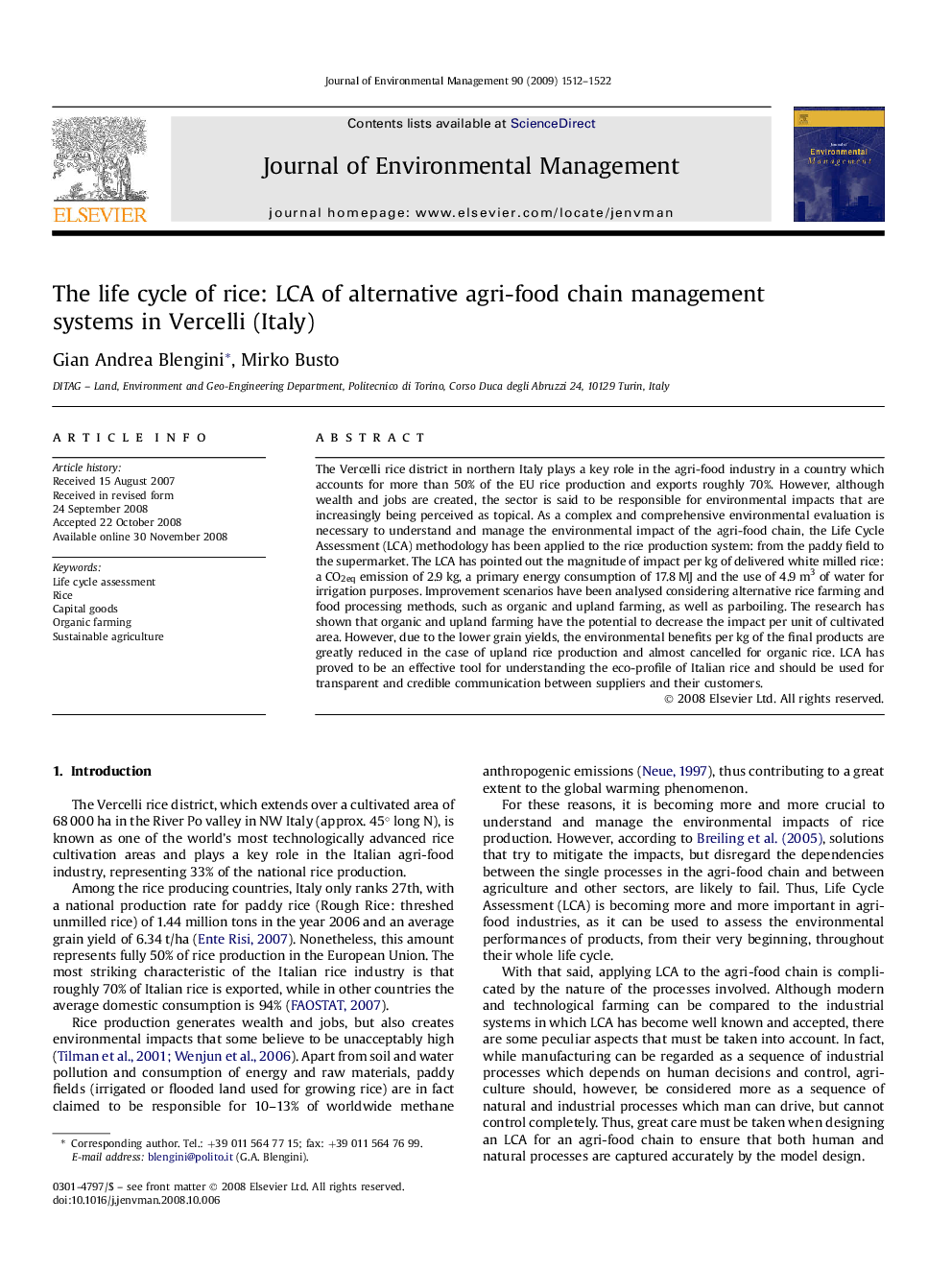| کد مقاله | کد نشریه | سال انتشار | مقاله انگلیسی | نسخه تمام متن |
|---|---|---|---|---|
| 1057971 | 947099 | 2009 | 11 صفحه PDF | دانلود رایگان |

The Vercelli rice district in northern Italy plays a key role in the agri-food industry in a country which accounts for more than 50% of the EU rice production and exports roughly 70%. However, although wealth and jobs are created, the sector is said to be responsible for environmental impacts that are increasingly being perceived as topical. As a complex and comprehensive environmental evaluation is necessary to understand and manage the environmental impact of the agri-food chain, the Life Cycle Assessment (LCA) methodology has been applied to the rice production system: from the paddy field to the supermarket. The LCA has pointed out the magnitude of impact per kg of delivered white milled rice: a CO2eq emission of 2.9 kg, a primary energy consumption of 17.8 MJ and the use of 4.9 m3 of water for irrigation purposes. Improvement scenarios have been analysed considering alternative rice farming and food processing methods, such as organic and upland farming, as well as parboiling. The research has shown that organic and upland farming have the potential to decrease the impact per unit of cultivated area. However, due to the lower grain yields, the environmental benefits per kg of the final products are greatly reduced in the case of upland rice production and almost cancelled for organic rice. LCA has proved to be an effective tool for understanding the eco-profile of Italian rice and should be used for transparent and credible communication between suppliers and their customers.
Journal: Journal of Environmental Management - Volume 90, Issue 3, March 2009, Pages 1512–1522